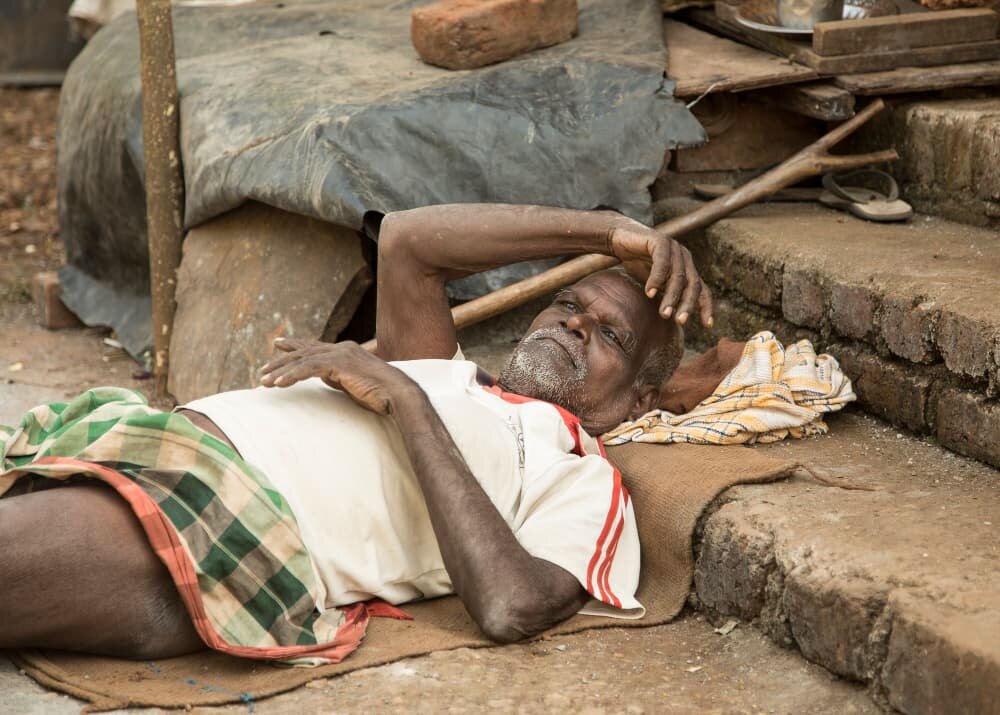Why spine care?
For people in developing countries, spine care is so much more than pain relief.

One billion people in the world experience spine pain.
Nearly 1 in 10 people worldwide suffer from low back pain at any given moment. Eight out of every 10 people will experience back or neck pain at some point in their lives.
When a family member cannot work due to back, neck, or other musculoskeletal disability, they do not suffer alone – their family, children, and community are also impacted. This is especially true in low- to middle-income countries where access to healthcare may be limited. The result may be a catastrophic chain of events for a family struggling to eke out an existence.
Access to spine care means returning to work, earning sustained income, and becoming a valuable part of a family or community.
The Global Burden of Spinal Disorders
Every year spinal conditions and back pain result in the loss of billions of dollars worldwide through health care costs, diminished individual income, and loss of productivity. The resulting pandemic of chronic spinal conditions compromises the quality of our lives and the vitality of our communities.
0,0.01,-0.01
The Global Burden of Disease Study evaluates the impact of over 315 health conditions. In this report, the following information regarding spinal conditions was reported:
Low back pain is the leading cause of disability.
Neck pain is the fourth leading cause of disability.
Low back pain and neck pain affect 1 billion people worldwide.
Spinal pain contributes more to the global burden of disease (including death and disability) than HIV, diabetes, malaria, stroke, Alzheimer’s disease, breast and lung cancer combined, traffic injuries, and lower respiratory infections.
By far the most common spinal conditions are back and neck pain, an affliction that affects the majority of the adult population in both the developed and developing nations of the world.
Over the course of a year, as much as 72% of the population worldwide will have a bout of back pain. At any given time, the percentage of people with back pain has been identified as high as 59% (Louw et al, 2007), the implications of which can be particularly devastating for populations that depend on manual labor for survival.
Populations in under-serviced areas of the world, especially rural populations, often have limited access to conventional healthcare resources to care for spinal conditions. Most are currently treated by traditional healers or in hospitals where they receive pain/anti-inflammatory medication only.
There are no comprehensive protocols or models of care available to enable health care workers to treat the spectrum of spinal conditions common in underserviced areas of the world.
The result is that individuals have to contend with pain and disability which affects their daily lives in many cases making manual tasks impossible, thus reducing their productivity and even their ability to maintain their standard of life.
The trend of back pain.
Over the past few decades, the total number of people with low back pain has continued to rise.1
From 1990 to 2015, the number of disability-adjusted life years (DALYs) contributed to low back and neck pain increased by 59.5%.2
In 2020, an estimated 619 million people were experiencing low back pain3 while 203 million people were experiencing neck pain4.
Spine care can change everything.
HEALTH
Together, low back and neck pain are the leading cause of years lived with disability (YLDs) and disability-adjusted life years (DALYs). Over 130 billion dollars are spent each year on spinal conditions in the US alone.5
POVERTY
The prevalence of spinal disorders is higher in low- to middle-income countries. It also affects those who are less educated. People who live in rural areas often have limited access to healthcare.
WOMEN EMPOWERMENT
Low back pain disproportionately affects women. When they can’t work, their children suffer.
-
Wu, A., March, L., Zheng, X., Huang, J., Wang, X., Zhao, J., et al. (2020). Global low back pain prevalence and years lived with disability from 1990 to 2017: estimates from the Global Burden of Disease Study 2017. Annals of Translational Medicine, 8(6), 299–299. ↩︎
-
Hurwitz, E. L., Randhawa, K., Yu, H., Côté, P., & Haldeman, S. (2018). The Global Spine Care Initiative: a summary of the global burden of low back and neck pain studies. European Spine Journal, 66(S6), 75–801. ↩︎
-
Ferreira, M. L., Luca, K. de, Haile, L. M., Steinmetz, J. D., Culbreth, G. T., Cross, M., Kopec, J. A., Ferreira, P. H., Blyth, F. M., Buchbinder, R., Hartvigsen, J., Wu, A.-M., Safiri, S., Woolf, A. D., Collins, G. S., Ong, K. L., Vollset, S. E., Smith, A. E., Cruz, J. A., … March, L. M. (2023). Global, regional, and national burden of low back pain, 1990–2020, its attributable risk factors, and projections to 2050: A systematic analysis of the Global Burden of Disease Study 2021. The Lancet Rheumatology, 5(6), e316–e329. ↩︎
-
Wu, A., Cross, M., Elliott, J. M., Culbreth, G. T., Haile, L. M., Steinmetz, J. D., Hagins, H., Kopec, J. A., Brooks, P. M., Woolf, A. D., Kopansky-Giles, D. R., Walton, D. M., Treleaven, J. M., Dreinhoefer, K. E., Betteridge, N., Abbasifard, M., Abbasi-Kangevari, Z., Addo, I. Y., Adesina, M. A., … March, L. M. (2024). Global, regional, and national burden of neck pain, 1990–2020, and projections to 2050: A systematic analysis of the Global Burden of Disease Study 2021. The Lancet Rheumatology, 6(3), e142–e155. ↩︎
-
Dieleman, J. L., Cao, J., Chapin, et al. (2020). US Health Care Spending by Payer and Health Condition, 1996–2016. JAMA, 323(9), 863–884. ↩︎
It’s about survival.
Many people commonly work and play in cramped, awkward, or slouched postures and perform repetitive actions and heavy work.
When they experience debilitating back or neck pain and are unable to work, they can no longer provide or care for their family.
How do we tackle the leading cause of disability?
We work with local governments and healthcare systems to develop sustainable clinics staffed by qualified spine care providers, including chiropractors, physiotherapists, doctors of osteopathy, and medical doctors.
Each clinic is designed to work in partnership with local hospitals, education centers, and international volunteers to provide ongoing care–eventually allowing the community to fully staff and manage the clinic.







